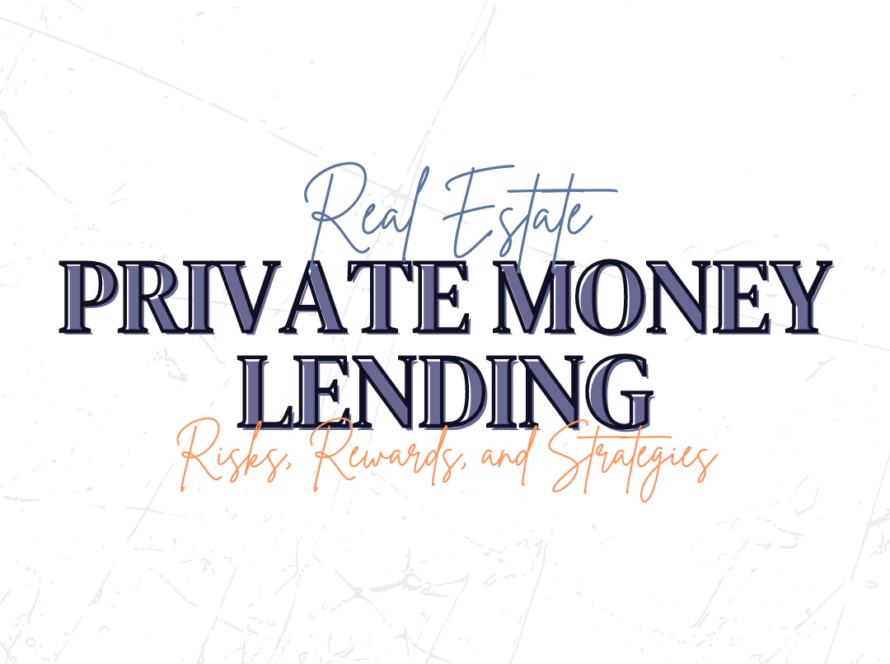Real Estate Lending Deals
Private real estate lending is an incredible way to grow wealth without the stress of property ownership. By acting as a lender, you provide funds to real estate investors, earning passive income through interest payments while the borrower handles the heavy lifting.
However, not all lending opportunities are created equal. A successful private lender knows how to spot safe, profitable deals and avoid risky ones. Whether you’re new to private lending or looking to refine your process, the key lies in a clear, systematic approach to evaluating opportunities.
In this guide, we’ll walk you through the essential steps to identify profitable real estate lending deals while minimizing risks. You’ll learn how to analyze loan-to-value ratios, assess borrower credibility, and spot red flags that others miss. By the end, you’ll have a proven framework to confidently choose deals that generate predictable, consistent returns.
Let’s dive in.
The Key Components of a Real Estate Lending Deal
Before evaluating a deal, you need to understand its core components. Every private lending opportunity revolves around three critical factors:
- The Property (Collateral):
The property serves as security for your loan. If the borrower defaults, you can claim the asset to recover your investment. Assess the property’s:- Current Value (through appraisals).
- After-Repair Value (ARV): The projected value after renovations.
- Location and Market Trends: Is the property in a growing, desirable area?
- The Loan Structure:
- Loan-to-Value (LTV) Ratio: The loan amount relative to the property’s value. A lower LTV reduces your risk.
- Interest Rate and Term: The return you’ll earn and the loan’s duration.
- The Borrower:
- Experience level (Have they successfully completed similar projects?).
- Creditworthiness and financial stability.
By thoroughly understanding these components, you can determine whether a deal is worth pursuing or poses unnecessary risks.
Loan-to-Value (LTV) Ratio: Your #1 Risk-Reduction Tool
The Loan-to-Value (LTV) ratio is one of the most critical metrics in private lending. It measures the loan amount compared to the property’s value and directly impacts your risk level.
Formula:
LTV Ratio = Loan Amount/Property Value × 100
For example, if the property’s current value is $100,000 and you lend $70,000, the LTV is 70%. This means you have a 30% cushion if the property’s value drops.
Why It Matters:
- Lower LTV = Lower Risk: The property has to lose significant value before you’re at risk.
- Market Cushion: A lower LTV protects you in case of market downturns.
Safe LTV Guidelines:
- For house flips: Keep LTV at 70% or lower.
- For rental properties: Target 75% or lower.
Real-Life Example:
You’re offered a deal where the property’s value after renovations (ARV) is $150,000. The borrower asks for a $90,000 loan, creating an LTV of 60%. This low ratio offers strong protection, making it a safer deal.
By prioritizing low LTVs, you reduce your chances of loss and increase the likelihood of profitable, secure investments.
Assessing the Borrower’s Credibility
A great property won’t save you from a bad borrower. Before funding any deal, it’s essential to thoroughly evaluate the borrower’s experience, reliability, and ability to deliver on their plan.
Key Factors to Evaluate:
- Experience:
- How many real estate projects have they completed successfully?
- Are they experienced in the type of project they’re proposing (e.g., flips vs. rentals)?
- Track Record:
- Ask for case studies, past project timelines, and ROI.
- Were they able to repay previous loans on time?
- Creditworthiness:
- Review their credit score and financial stability.
- A borrower with a solid financial history is less likely to default.
- Project Plan:
- Request a detailed plan, including budget, timeline, and exit strategy (e.g., sale or refinance).
- Does the plan seem realistic?
Red Flags to Watch Out For:
- Borrowers with no experience or failed past projects.
- Unrealistic project timelines or budgets.
- Poor credit history or a lack of financial transparency.
By carefully assessing the borrower, you’ll significantly reduce your risk and position yourself for a successful deal.
Evaluating the Property: Location, Value, and Exit Strategy
The property itself is the backbone of any private lending deal. Here’s how to analyze it effectively:
- Location:
- Is the property in a desirable neighborhood with strong demand?
- Look for indicators like new developments, low crime rates, and job growth.
- Property Value:
- Get a professional appraisal or broker’s opinion to verify the property’s current value.
- Compare similar properties (comps) that recently sold in the area.
- Exit Strategy:
- How will the borrower repay the loan? Common exit strategies include:
- Selling the property after renovations (fix-and-flip).
- Refinancing into a long-term mortgage (buy-and-hold).
- Ensure the borrower’s exit plan aligns with the property’s potential value.
- How will the borrower repay the loan? Common exit strategies include:
Example Scenario:
You’re evaluating a $120,000 property in a growing market. The borrower plans to renovate and sell it for $180,000. With a $70,000 loan, the deal looks strong, as the low LTV and solid exit plan ensure your investment is secure.
Spotting Red Flags in Private Lending Deals
Even promising deals can have hidden risks. Be on the lookout for these red flags:
- High LTV Ratios: Loans exceeding 75% of a property’s value increase your risk.
- Unrealistic Projections: Overestimated after-repair values (ARVs) or underestimated renovation costs.
- Inexperienced Borrowers: Lack of a track record increases the likelihood of project delays or failure.
- Poor Collateral: Properties in declining markets or areas with low demand.
What to Do When You Spot Red Flags:
- Dig deeper: Ask for additional data or third-party appraisals.
- Negotiate better terms: Reduce the loan amount or increase the interest rate.
- Walk away: Sometimes, the best deal is the one you don’t pursue.
Conclusion
Identifying safe and profitable real estate lending deals is the key to success in private lending. By focusing on low LTV ratios, evaluating borrower credibility, and analyzing the property’s value and location, you can confidently choose investments that generate strong, consistent returns.
The MicroBanking Method provides the tools, frameworks, and guidance needed to simplify this process. Whether you’re a beginner or a seasoned investor, this proven system helps you spot opportunities, mitigate risks, and scale your lending portfolio.Ready to take the next step? Visit The MicroBanking Method to learn how you can start funding profitable real estate deals and build a passive income stream that works for you




